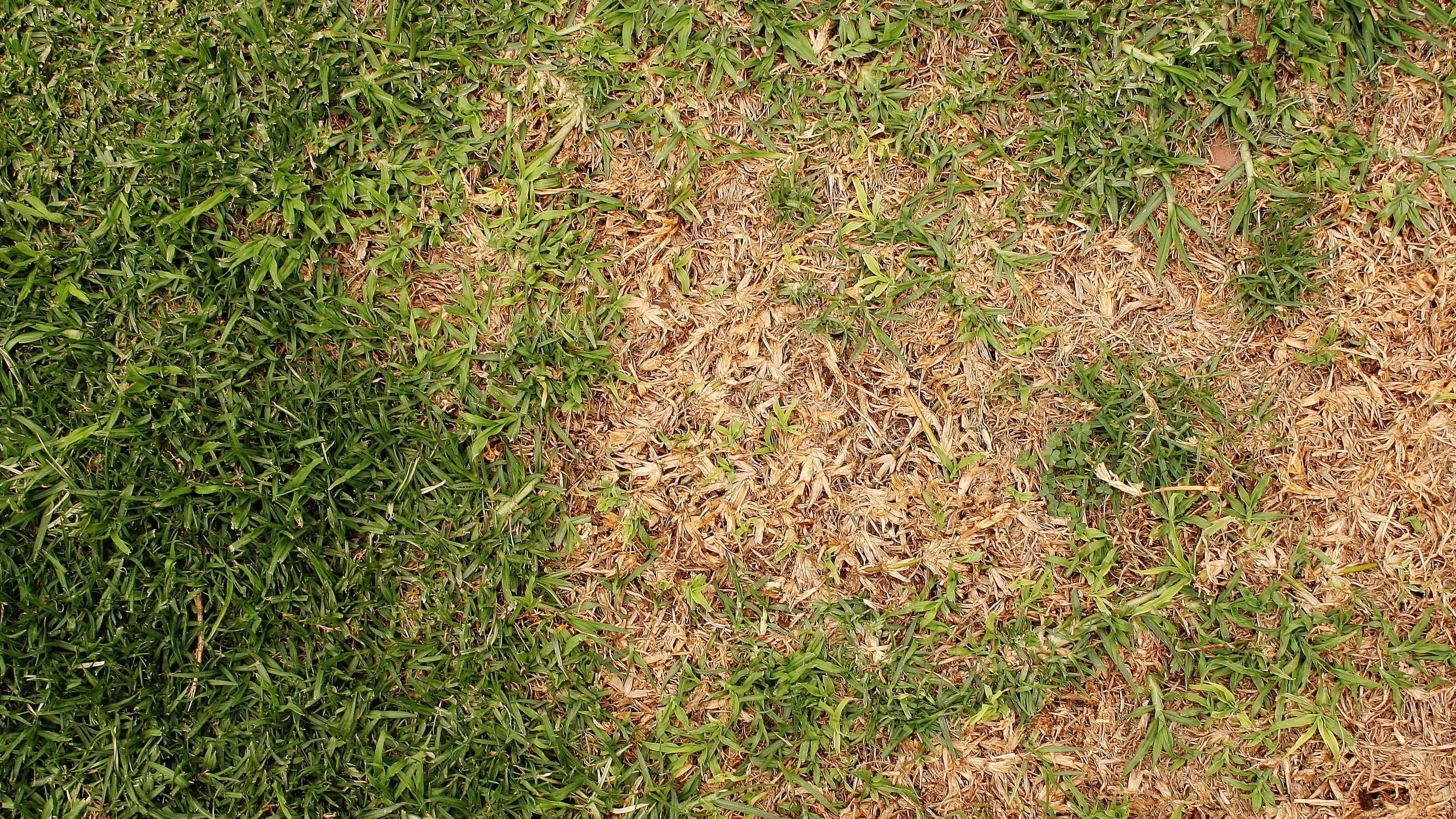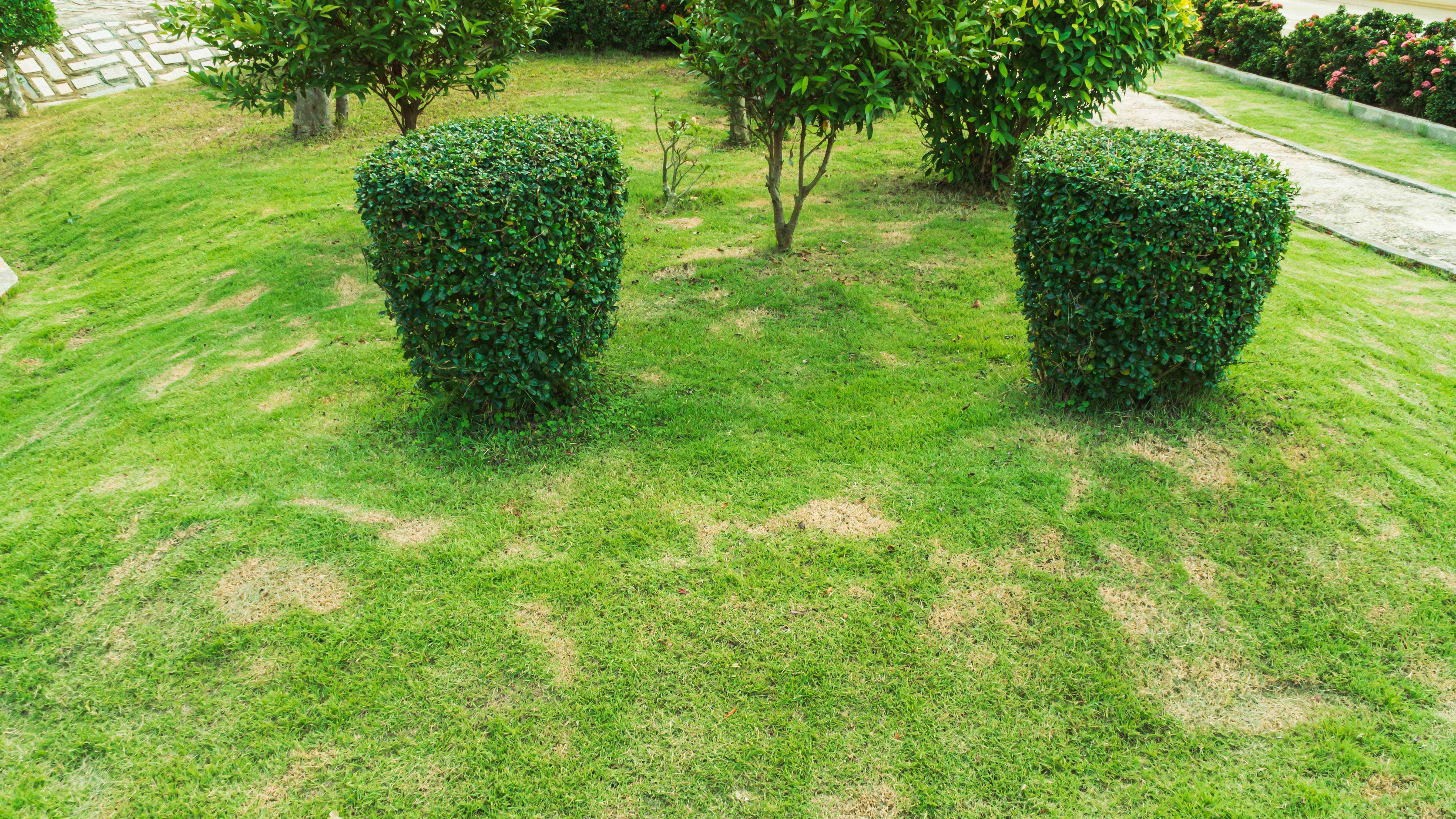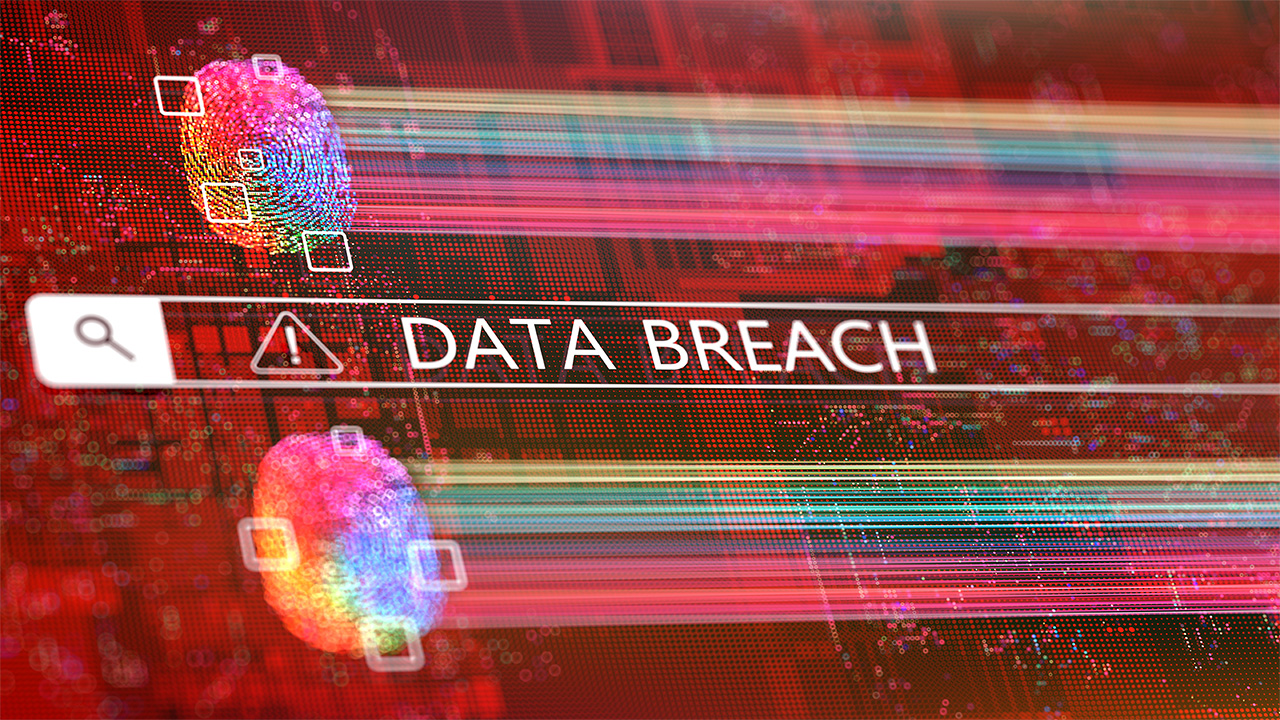How to get rid of brown patches in your lawn — we ask a gardening expert

As the weather warms up, it’s the perfect time to spruce up your garden and tackle those lawn care tasks for greener grass. But if you’ve noticed brown patches ruining your once lush grass, this could be a tell-tale sign that your lawn needs urgent attention and consequent repair.
Not only is this an indicator of unhealthy soil/grass, but can look unsightly, especially if you’re hosting those backyard barbecues or gatherings. That’s why it’s important to learn the best methods to treat brown patches and maintain healthier, thicker grass all year round.
We ask a gardening and lawn care expert to share their top tips on how to get rid of brown patches on your lawn, and what causes them in the first place. Just be sure to avoid these common lawn care mistakes you’re probably making right now or these 7 watering mistakes that are ruining your lawn.
Why am I getting brown patches in the lawn?

If you’re wondering what could be causing these patches, there are various factors. However, the main cause is lawn disease. “Brown spots on lawns can be caused by several factors, such as grubs, pet urine burns, annual weed dieback, and thatch,” says Dr. Matthew Koch, Director of Biotechnology, Genetics, and Seed at Scotts.
“However, the main culprit of brown patches is often lawn disease. Lawn disease can be rooted in various causes, like prolonged wetness from dew, rain, nighttime or evening watering, or poor drainage—or any other conditions that keep grass blades wet during times of increased heat. These conditions can lead to the perfect growth conditions for fungal diseases.”
Fungal growth is particularly frequent when conditions are overly moist and warm. Root rot is a fungal disease in itself too, brought on by the roots being overexposed to water. The only indication of this is the grass will show signs of struggle, wilting, yellowing and eventually dying. However, there are tips to revive dead grass and make your lawn green again.
How to repair brown patches in the lawn

Now that you’ve established the possible reasons for your brown areas, it’s time to take action to repair your lawn, and prepare it for new growth. “To repair brown patches on your lawn, start by removing dead grass and debris using a rake or dethatcher to expose the soil,” advises Koch. “Loosen the soil with a garden fork or aerator to improve aeration and drainage, and consider adding organic matter like compost or topsoil to enhance soil structure and fertility. Select a grass seed blend that matches the rest of your lawn and spread it evenly over the patchy area.”
Get instant access to breaking news, the hottest reviews, great deals and helpful tips.
“Lightly cover the seeded area with topsoil to retain moisture and protect the seeds. Keep the area consistently moist until the seeds germinate and establish roots, watering lightly and frequently. Once the new grass has grown, fertilize according to the recommendations for your grass species to promote healthy growth.”
If you need to sow new grass seedlings, you’ll need to know how to plant grass seed for a greener yard.
When is the best time to repair brown patches?

This usually depends on your grass type, location and climate. Typically, cool-season grasses thrive in the northern states of the United States, the central states should plant traditional grasses, and finally the south should use warm-season grasses.
“The best time to repair patches in the lawn is during the active growing season for your grass species,” agrees Koch, “For cool-season grasses like Kentucky bluegrass or fescue, early fall (late August to early September) or early spring (late March to early April) are ideal times for seeding. For warm-season grasses like Bermuda grass or zoysia grass, late spring (May to early June) is the best time for seeding. Avoid seeding during extreme heat or drought conditions, as this can stress the new grass seedlings.”
Things to do after lawn repair

Once you’ve done the work to treat the brown spots, you’ll need to make sure they don’t re-appear on your lawn. “The best practice to treat lawn disease is to prevent them, by taking proactive measures in the spring instead of waiting until the first brown patches appear,” adds Koch.
“To both prevent and control lawn disease and simultaneously fertilize for a thicker, greener lawn. Turf Builder is a great option as it contains both lawn fungicide and fertilizer, defending against various diseases while simultaneously feeding your grass to grow thicker and greener. It can be applied to lawns as a preventative measure or to control disease at the first sign.”
Other preventative measures include regular lawn care such as mowing correctly, killing weeds, checking soil conditions and knowing how much you should water your lawn. “Maintain consistent moisture in the seeded area and monitor for signs of growth and potential issues like weeds or pests. Regularly maintain your lawn by mowing, watering, fertilizing, and aerating to promote overall health and resilience”.
More from Tom's Guide
- 7 common lawn care mistakes you’re probably making right now
- 9 ways to get the most out of your lawn mower
- 5 plants that will keep wasps out of your yard

As the Homes Content Editor, Cynthia Lawrence covers all things homes, interior decorating, and garden-related. She has a wealth of editorial experience testing the latest, ‘must-have’ home appliances, writing buying guides and the handy ‘how to’ features.
Her work has been published in various titles including, T3, Top Ten Reviews, Ideal Home, Real Homes, Livingetc. and House Beautiful, amongst many.
With a rather unhealthy obsession for all things homes and interiors, she also has an interior design blog for style inspiration and savvy storage solutions (get rid of that clutter!). When she’s not testing cool products, she’ll be searching online for more decor ideas to spruce up her family home or looking for a great bargain!
